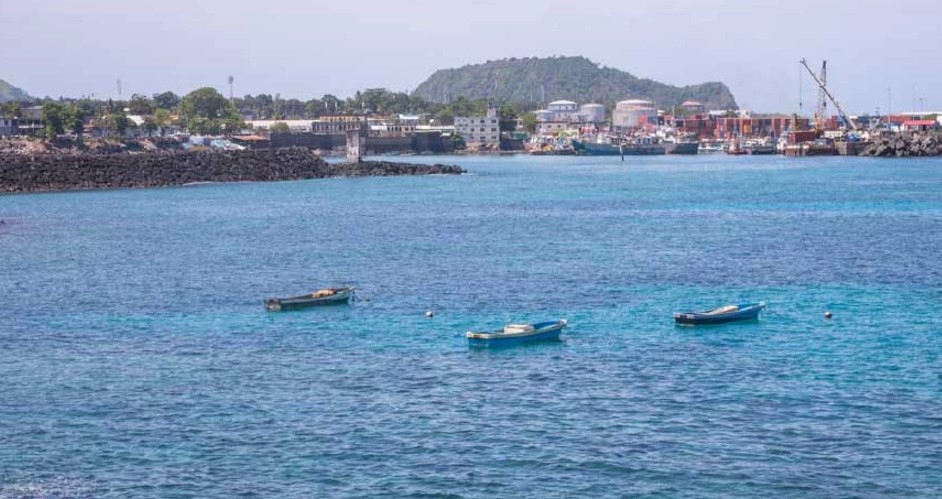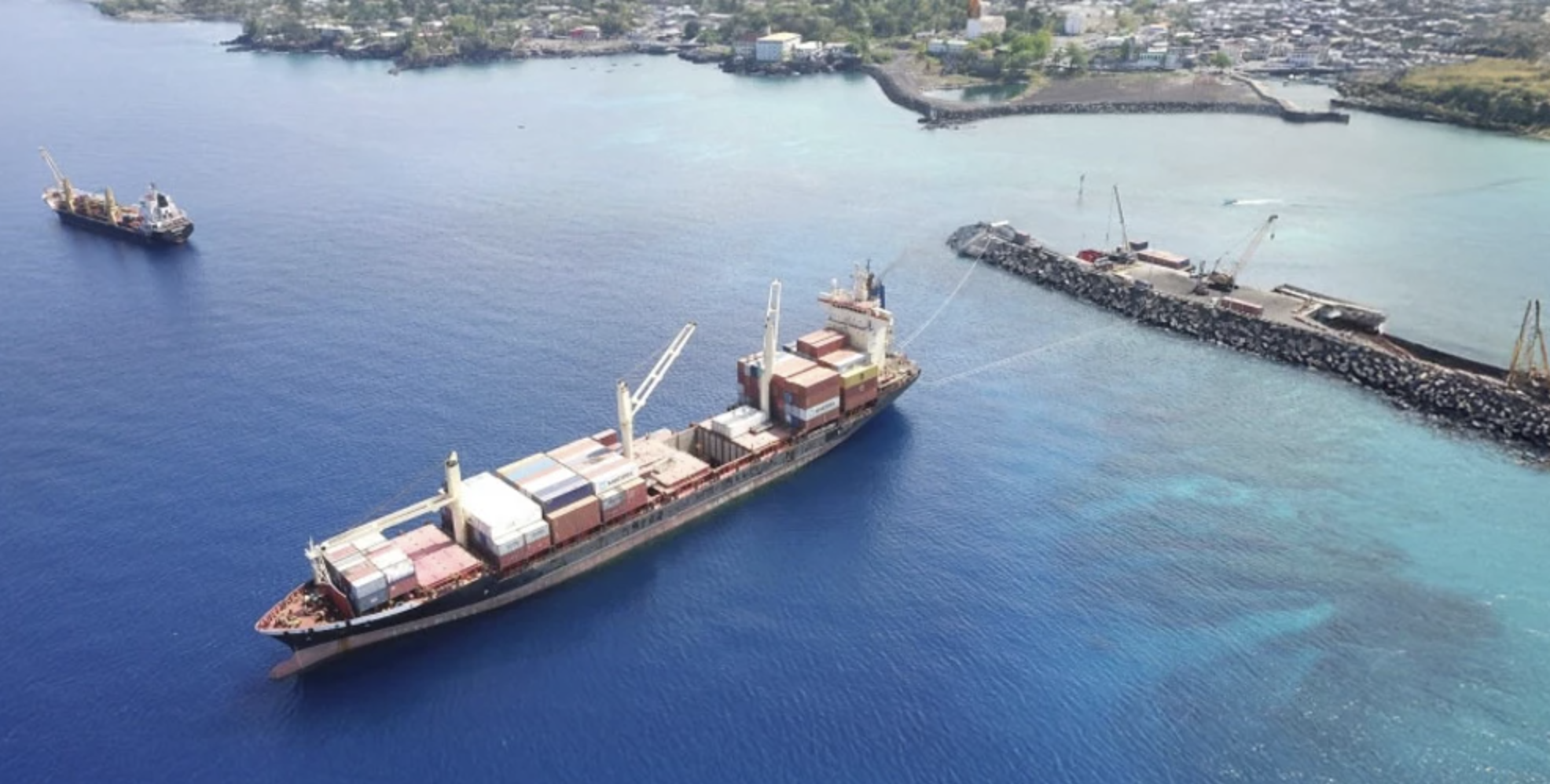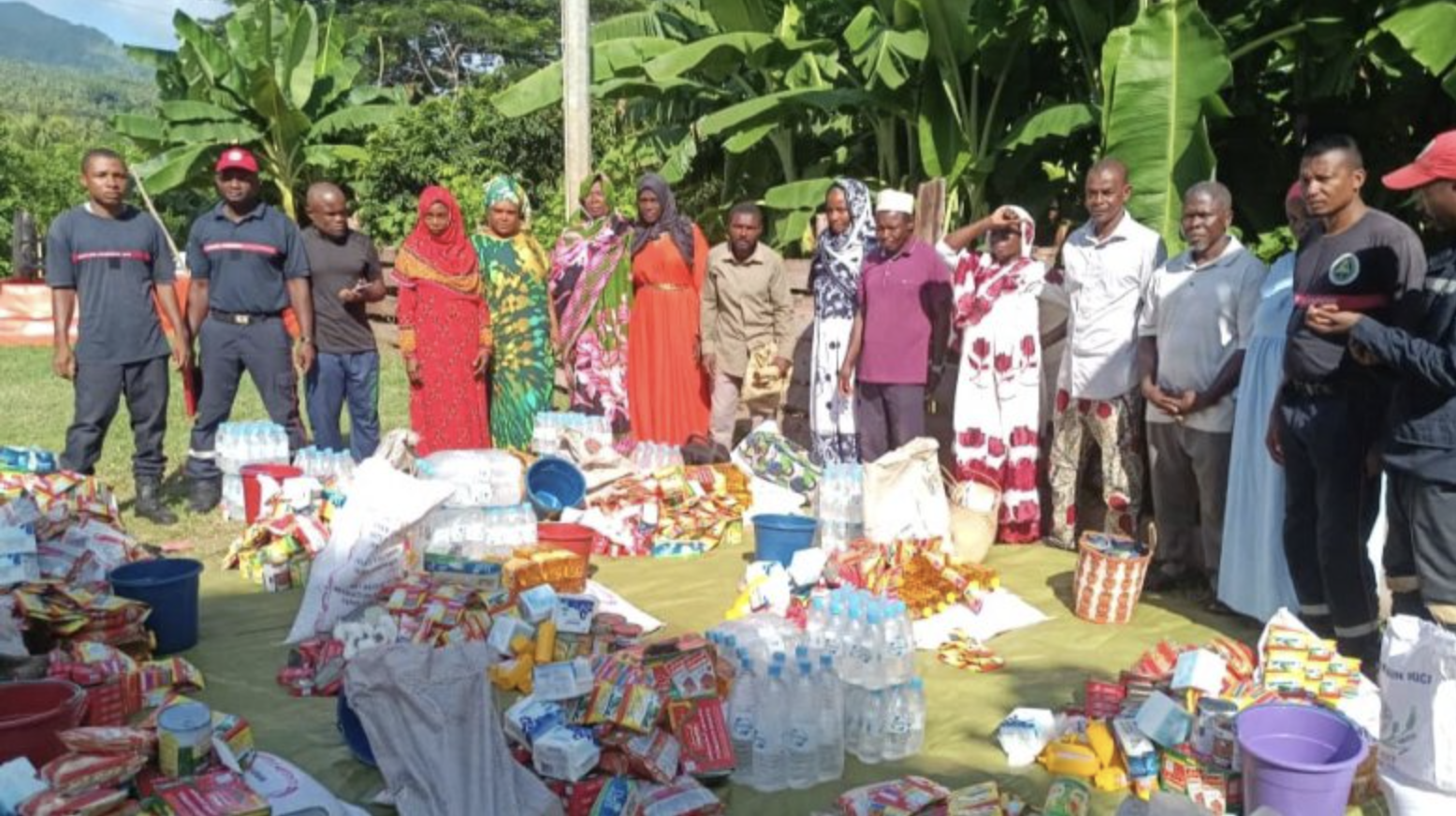
Ocean view of Moroni, capital city of Comoros. Photo: Tsiky Lalatiana Ranaivoarisoa / World Bank
By: Tahir Akbar, Ben Ahmed Abdou Aboubacar, and Kabeer Dawani
In April 2019, Cyclone Kenneth struck Comoros, wreaking havoc across the island nation. Affecting over 40 percent of the population and inflicting damages exceeding $185 million, the cyclone highlighted the vulnerability of small island developing states (SIDS) to extreme weather events exacerbated by climate change. Comoros is particularly susceptible to hazards such as cyclones, flooding, and sea-level rise. Like many other SIDS, the country grapples with limited resources and infrastructure—challenges further compounded by its relative geographical isolation.
Cyclone Kenneth laid bare the vulnerabilities in Comoros’ infrastructure, particularly along its coastlines. These areas—which house much of the population and critical infrastructure—are at heightened risk from rising sea levels, coastal erosion, and storm surges. This is exacerbated by the poor state of existing infrastructure, including inadequate drainage systems that intensified flooding. Many buildings and roads are also ill-equipped to withstand the increasingly frequent extreme weather events in the region.
How Comoros is rethinking resilience with the support of partners
In response, the World Bank approved the $45 million Comoros Post-Kenneth Recovery and Resilience Project, which aims to rebuild the country’s critical infrastructure while embedding resilience into every stage of the recovery process—ensuring that Comoros is better equipped to handle future disasters.
The project targets the country’s most urgent needs, particularly in sectors that have historically lacked support. A key focus is restoring and reinforcing essential infrastructure, with a strong emphasis on integrating disaster risk reduction and resilience. The Global Facility for Disaster Reduction and Recovery (GFDRR) has played a pivotal role in supporting the project, providing both technical expertise and financial resources.

Container ship in Port of Moroni, Comoros. Photo: World Bank
One of the key elements of this effort is the development of more resilient housing infrastructure. In collaboration with Build Change, GFDRR provided technical assistance to create a guide for resilient housing construction in Comoros. This initiative included organizing training for a wide range of stakeholders—ranging from construction companies to government ministries and local laborers—to ensure that new homes are built with disaster resilience in mind. There are 189 houses being designed to better withstand the increasingly frequent and severe extreme weather events that threaten the island, with 55 homes that have already been handed over to beneficiaries. For many beneficiaries, the opportunity to rebuild in a way that ensures their homes will endure future storms has been a source of hope and security.
Mariama, one of the beneficiaries of the project, shared her gratitude for the support she received: “I not only have all the administrative papers legally proving that the land and the house belong to me, but what also reassures me is that my house today will withstand the climatic hazards that our dear country is facing.”
Mariama's new 40m² home includes two bedrooms, a living-dining room, a kitchen, and sanitary facilities, along with a 1,000 m³ permanent water tank. She expressed her satisfaction with the project, emphasizing that the new home has provided her with a sense of safety and security. “I am very happy to be part of this program because currently I feel safe against natural disasters,” she said.
Haroussi, another beneficiary, also expressed his gratitude for the new home that has provided him with stability after the devastation of Cyclone Kenneth. He praised the resilience of his new home, highlighting not only its ability to withstand disasters but also its flexibility for future expansion. "I can, if the means allow me to, make an extension either on the sides or upstairs," he said.
Another key priority has been enhancing the urban infrastructure of Comoros, especially in its capital city, Moroni. Working alongside UN Habitat, GFDRR supported the upstream preparation for a comprehensive urban master plan for Moroni that emphasizes long-term resilience. This plan will guide the city’s future growth, ensuring that development is sustainable and that urban infrastructure is designed to withstand the stresses posed by climate change, including rising seas and stronger storms. GFDRR also supported the development of the Urban and Construction Code (CUC) and the National Urban and Housing Policy (PNUH), which are both currently under review by the National Assembly. These policies aim to provide a resilient framework for urban development, ensuring that all future construction projects adhere to standards that reduce vulnerability to flooding, coastal erosion, and other disaster risks.
The resilience-building efforts in Comoros, however, have not been limited to the recovery project. When heavy flooding hit the country in early 2024, GFDRR quickly mobilized to assess the damage, collaborating with local sectors to evaluate the extent of the flooding. This led to the activation of the Crisis Response Window Plus mechanism, which resulted in a $32 million funding request to support the country’s recovery efforts. This continued support ensures that Comoros can stay on track in its long-term resilience-building efforts, addressing both immediate challenges and preparing for the inevitable climate impacts of the future.

Distribution of emergency goods in Anjouan. Photo: General Directorate of Civil Security of Comoros
What’s next: a path forward through collaboration
More recently, the World Bank approved $12.5 million additional financing for the project, which will ensure that the full stretch of the road from Mtsangadjou to Foumbouni will be rehabilitated, incorporating resilience features to withstand flooding and cyclones. This will complete the integration of the road with sections rehabilitated by other development partners, including the European Union at Mtsangadjou and the African Development Bank at Foumbouni. The strategic nature of this financing ensures that the road is fully connected, supporting the government’s priority to link the capital, Moroni, with Mtsangadjou. This collaboration with key development partners not only enhances the infrastructure but also generates a positive multiplier effect, benefiting the broader resilience and connectivity of the country.
The recovery efforts supported by the World Bank, GFDRR, and other development partners are vital in building long-term resilience. However, true progress hinges on the strength of partnerships—whether with local stakeholders, communities, or other donors. By working together, these efforts are not just addressing infrastructure vulnerabilities and disaster preparedness; they are laying the foundation for a more resilient future.
